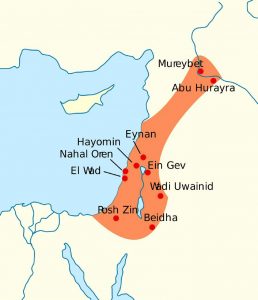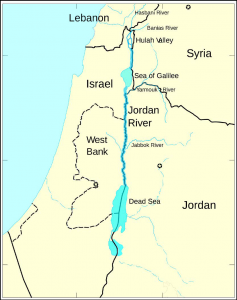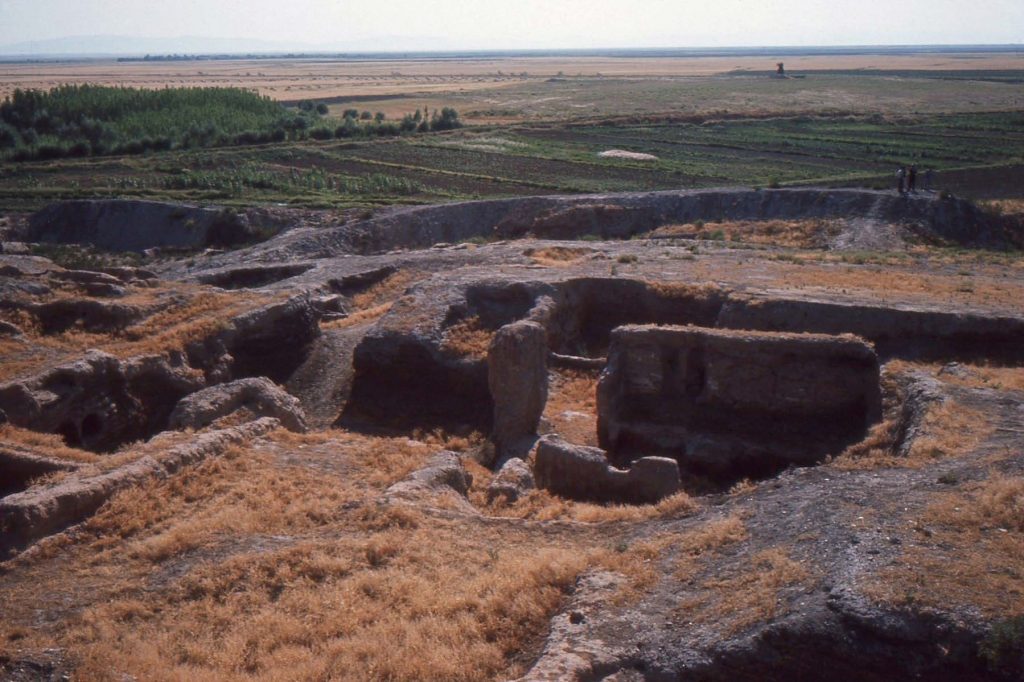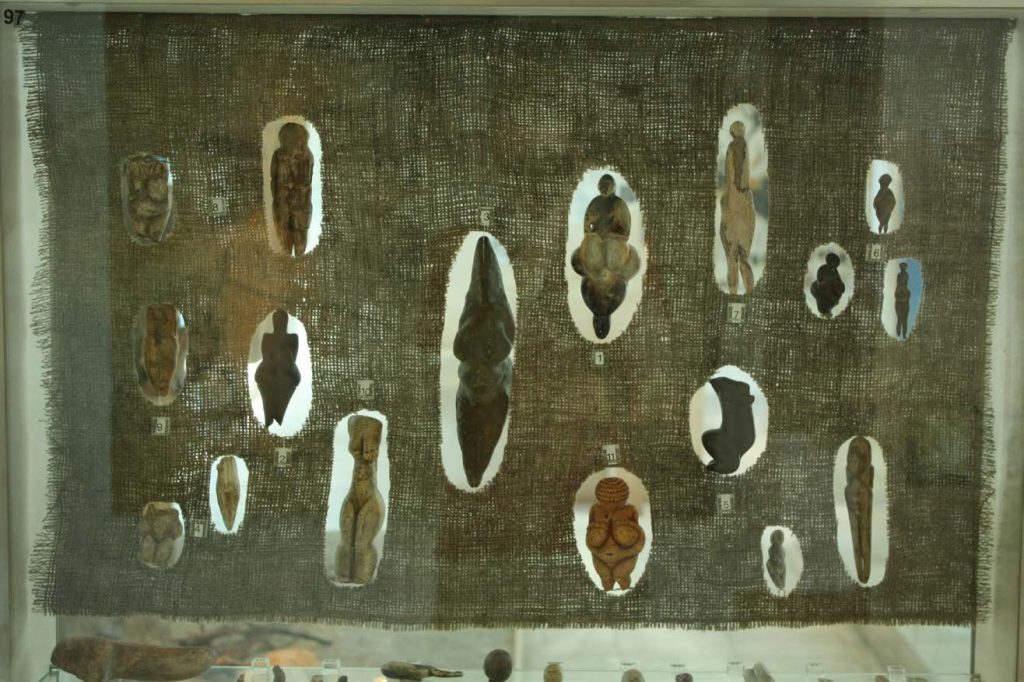Agriculture and the “Neolithic Revolution”
Agriculture and the “Neolithic Revolution”
Historian Lauren Ristvet defines agriculture as the “‘domestication’ of plants… causing it to change genetically from its wild ancestor in ways [that make] it more useful to human consumers.”[1] She and hundreds of other scholars from Hobbes to Marx have pointed to the Neolithic Revolution, that is, the move from a hunter-gatherer world to an agricultural one, as the root of what we today refer to as civilization. Without agriculture we don’t have empires, written language, factories, universities, or railroads. Despite its importance, much remains unclear about why and where agriculture began. Instead, scholars hold a handful of well-regarded theories about the roots (pun intended) of agriculture.
Most scholars agree that the Ice Age played a fundamental role in the rise of agriculture, in the sense that it was impossible during the much colder and often tundra-covered period of the Pleistocene, but inevitable during the Holocene thawing. Only 4,000 years before the origins of agriculture, the planting of anything would have been an exercise in futility. During the Last Glacial Maximum (24,000 – 16,000 years ago), average temperatures dropped “by as much as 57˚ F near the great ice sheets…”[2] This glaciation meant not only that today’s fertile farmlands of Spain or the North American Great Plains were increasingly covered in ice, but also that other areas around the world could not depend on constant temperatures or rainfall from year to year. Pleistocene foragers had to be flexible. The warming trend of the Holocene, by contrast, resulted in consistent rainfall amounts and more predictable temperatures. The warming also altered the habitats of the megafauna that humans hunted, alterations that in some cases contributed to their extinction. Therefore, as animal populations declined, humans were further encouraged to plant and cultivate seeds in newly-thawed soil.
When we start to examine other factors that allowed humans to transition to agriculture, we find that the climate factor looms even larger. For example, agriculture was usually accompanied by sedentarism, but we see communal living and permanent settlements among multiple groups of hunter-gatherers. Homo sapiens had also begun to domesticate animals and plants alike during the Pleistocene. Humans were already being buried alongside dogs as early as 14,000 years ago.[3] As we’ll see below, gatherers were developing an increasing taste for grains long before they would abandon a foraging lifestyle. Essentially, humans were ready for agriculture when climate permitted it.
We discuss elsewhere the timing of agriculture’s appearance in all of the continents, but generally speaking by about 8,000 years ago, farmers in West Asia were growing rye, barley, and wheat. In northern China, millet was common 8,500 years ago. In the Americas, the domestication of maize began around 8,000 years ago in Mesoamerica, while at about the same time, Andean residents began cultivating potatoes. Once all of these areas realized agriculture’s potential as a permanent food source, they began to adapt their societies to increase their crop consistency and crop yields. We’ll discuss how agriculture affected societal development below.
First farmers of West Asia [or the Fertile Crescent]
In later chapters we will discuss Mesopotamia, the area between the Euphrates and Tigris Rivers that agriculture would make the “cradle of civilization.” (See Map 2.1). However, the incubator of Mesopotamian and Fertile Crescent agriculture and cultural patterns dated back to the foragers of the nearby Eastern Mediterranean, thousands of years before. The rye, barley, and wheat in West Asia were first harvested by late Pleistocene foragers called the Kebarans who ground wild wheat and barley into a porridge.[4] Kebarans consumed the porridge as part of their broad spectrum diet that also included land mammals, birds, and fish. Advancing into the Holocene we see the “Natufian Adaptation,” where residents of this same area began to see the benefits of sedentary living in a precursor to the advent of agriculture. The Natufians consumed the same rye, barley, and wheat that their Kebaran predecessors had, but because their teeth were well-worn it appears they ate relatively more of it. Having a constant source of these grains enabled their eschewing long hunting or gathering soujourns; instead, the Natufians drew more of their meat from in and around Lake Huleh in modern Israel. Near Lake Huleh was Ain Mallaha, one of the earliest examples of year-round human settlement and an important precursor to sedentary agriculture.

Another permanent settlement in Southwest Asia seems to have been more directly responsible for the decision to actually domesticate grain, rather than simply cultivate wild varieties. Abu Hureya in Syria was deeply affected by the Younger Dryas event of 11,000 years ago, an event which caused many of their wild food staples to disappear. Rather than migrating out of the area, the Abu Hureyrans cultivated rye. Soon afterward, other sites in the Levant began to see the planting of barley, while wheat was cultivated in both the Levant and Anatolia.[5]
First Permanent Settlements in West Asia [of the Fertile Crescent]
The transition from foraging, to collecting to cultivating took place over several centuries, but these gradual changes did serve to mark a very distinct era of permanent settlement during the Neolithic Period. Increased rainfall around 9600 BCE meant that the Jordan River would swell yearly, in the process depositing layers of fertile soil along its banks. This fertile soil allowed locals to rely on agriculture for survival. Soon after they founded Jericho just north of the Dead Sea: “perhaps the very first time in human history that a completely viable population was living in the same place at the same time.”[6] By Jericho’s height, around 9000 BCE, the settlements population reached the hundreds. This increase cannot be considered an urban boom of course, and the transition away from foraging occurred gradually. For example, excavations from this area have unearthed no separation of tasks or dwellings by gender or skill. However, by the end of Jericho’s development, maintaining large populations in one place would prove to produce other extensive adjustments.[7]
Jericho’s residents did distinguish themselves from their hunter-gatherer predecessors, however, through their relatively extensive construction projects. They used mud bricks to build a wall that encircled the settlement probably for flood control, a tower, and separate buildings for grain storage.

The former foragers now living at Jericho could rely on fish or other aquatic creatures for meat as they experimented with permanent settlement, but those foragers living further away from large bodies of water would need another source of meat. This need increasingly was met by animal domestication. Domestication would prove to be a slow process, as humans learned the hard way that zebras bite, impalas are claustrophobic, and bighorn sheep do not obey orders. In other words, some animals cannot be domesticated, but this is information only under- stood through trial and error. By about 7,500 BCE, however, humans in the Taurus and Zagros mountains employed selective breeding to eventually domesticate mountain sheep and goats. The temperament and size of pigs and cows delayed their domestication until the 6,000s BCE, but this process proved equally, if not more important, than that of sheep and goats.
As agriculture and animal domestication progressed, settlements around the Mediterranean became larger and more sophisticated. By 7,000 BCE on the Anatolian plateau, Çatalhüyük reached several thousands of inhabitants. The residents at Çatalhüyük buried their dead, con- structed uniform adjacent houses with elaborate designs painted on their interior walls, and had multiple workshops where (among other activities) they wove baskets, and made obsidian mirrors as well as daggers with “carved bone handles.”[8] Catalhüyük denizens wove wool into cloth; developed a varied diet of peas, nuts, vegetable oil, apples, honey, and the usual grains; and improved weapons technology with sharper arrows added to their use of daggers and lances. These gains may seem modest by our standards, but the legacy of communal living and, ultimately, political centralization that they introduced was extraordinary.

Jericho and Çatalhüyük were surely some of the most notable early settlements, but they were not alone. The appearance of these two settlements was accompanied by the increasing presence of village life across the world. Most early agricultural villages in Southwest Asia and around the world were very similar in appearance; they had around twenty residents and were organized around grain cultivation and storage. Small huts were organized in a “loose circle,” and grain silos were placed between each hut. Labor was a communal activity, and village members all spent time hoeing the fields or hunting. The most valuable asset to a community was the grain itself, but neither it nor the land where it grew it belonged to one individual.
This model existed for hundreds and even thousands of years in some areas, until the villages stopped hunting and domesticated animals. For many scholars, the abandonment of hunting represents the “real” Neolithic Revolution. As communities completely abandoned hunting and gathering, they dedicated more energy to warfare, religion, and construction; in consequence, dwellings and settlements grew, along with a concomitant focus on tool and weapon making.[9]
Leaving Paleolithic Culture Behind
While the Neolithic Era is described in greater detail elsewhere, it is important to understand Paleolithic and Neolithic differences in order to convey a sense of just how revolutionary the shift to agriculture was for humanity. For example, agriculture contributed to (along with religion and trade) the development of class. Before agriculture, hunter-gatherers divided tasks like seed gathering, grinding, or tool-making. However, without large scale building projects like aqueducts or canals required for agriculture, hierarchies were much less pronounced. The intensification of agriculture during the Neolithic required irrigation, plowing, and terracing, all of which were labor intensive. The amount of labor required could not be met through simple task division; someone had to be in charge. This meant the establishment of ruling elites, a societal grouping that had not existed during the Paleolithic.
While violence certainly existed during the Paleolithic period, organized warfare was an invention of the Neolithic. Agriculture meant larger populations and settlements that were more tightly packed and closer to one another. These closer quarters created new social and economic pressures that could produce organized violence. Agricultural intensification produced stores of food and valuables that could be seized by neighbors. During the 9,000s BCE, settlements like Jericho began to build defensive walls, while skeletons unearthed in the area reveal wounds from new types of projectiles (like the Khiam Point) developed during the era.[10]
Family life also changed significantly during the Neolithic. Sedentary communities invested more time and resources into the construction of permanent homes housing nuclear families. People spent less time with the community as a whole and within homes it became easier to accumulate wealth and keep secrets.

The shift in gender roles after agriculture seems to be even more pronounced, as the role of women became more important as humans moved out of the Paleolithic and into the Neolithic era. During the Paleolithic Era, and until recently in fact, a child would be breastfed until he or she was three or four years old, a necessity preventing mothers from joining long-distance hunting expeditions without their toddlers. However, a breastfeeding woman could complete tasks that “don’t require rapt concentration, are relatively dull and repetitive; they are easily interrupted, don’t place the child in danger, and don’t require the participant to stray far from home.”[11] Spinning, weaving, and sewing were some of these tasks. Also, the essential tasks of preparing food and clothing could be accomplished with a nursing toddler nearby. These tasks that may be consigned as “women’s work” today are among the most important tasks (and very time consuming ones before the industrial revolution) that a human could perform. In fact, they were so time consuming that women would spend most of their day on them, often being assisted by men.
Over time, Paleolithic women gathered new species of berries as well as bird eggs, and learned which mushrooms were nontoxic. Women also were the principal gatherers of mosses for sleeping mats and other plants for shelter. When men returned with a kill, the women then began an involved process of dressing and butchering it. Sinews from animals and fibers from plants became rope to tie or fasten the hides as well as baskets. Women thus were essential to any kind of productivity or progress associated with hunting. Women used sinews and fibers to create netting for transport and for hunting and fishing. In hunting societies with elements of horticulture, women were responsible for, and could provide, such food as legumes, eggs, and grains. Food gathering and weaving, especially in the dry Mediterranean, was an outdoor and community activity that also served as a preschool and apprentice system for children. So women were also community educators.
Neolithic Women
While Paleolithic women certainly had important responsibilities, the added tasks of herding and animal domestication expanded their roles tremendously in the Neolithic era. Neolithic survival required not only effective food storage, but also increased production. Children on a farm can be more helpful and put in less danger than those on a hunt. Neolithic women increasingly bore more children, either because of increased food production or to help augment it. This increase in child bearing may also have offset an increase in mortality due, for example, to disease. Because dangers from disease grew in new villages due to the ease with which deadly diseases spread in close quarters, and nearby domesticated animals whose diseases spread from animal to humans, more children would be necessary to replace those who had succumbed to illness.
While Neolithic women carried an increased child-bearing responsibility, their other responsibilities did not necessarily wane. Though women may not have fired pottery when it began to appear some 6,000 years ago, they appeared on it in decorative symbols of female fertility. Around 4,000 BCE, gendered tasks shifted again with the domestication of draft animals. Food production once again became men’s domain, as herding was incompatible with childrearing. Later, in Neolithic herding societies, women were often responsible for the actual domestication of feral babies, nursing them and raising them. Men would shear sheep, help weave, market the textiles, and cultivate the food that was prepared in the home.
We should say that this was not the case with all agricultural societies, as many horticulturalists who were able to cultivate crops closer to home were able to remain matrilineal. For example, we have the case of Minoan women on the Mediterranean island of Crete that we discuss in more detail in Chapter Five. On Crete’s hilly terrain, women were able to cultivate terraced horticulture and keep herds of sheep and goats nearby. Therefore, as women lost power and influence elsewhere due to more intensive agriculture, Minoan women actually expanded their control over Crete’s economic and cultural life and would help give rise to Classical Greece.
Toward First Civilizations
We will discuss the Bronze Age elsewhere, but we should mention here that new pursuits like mining added to the domestic burden on women. The advent of the Bronze Age led to far-spread searching and mining for copper and other metals like arsenic or tin to harden it and create the bronze alloy. Mining consequently become a male pursuit. Between 9,000 and 4,000 BCE, as metal become a source for wealth and subsistence, men’s roles shifted from being secondary to being both the food collectors and the economic backbone of individual families and societies.
These Neolithic developments in sedentary agriculture and village life would be the foundation for an explosion of cultural development three thousand years later in Egypt and Mesopotamia (addressed later in this text). By the Age of Exploration in the 1500s CE, most of the world had adopted agriculture as a primary means of subsistence, and the foundation of great civilizations.
- Lauren Ristvet, In the Beginning: World History from Human Evolution to the First States (Boston: McGraw Hill, 2007), 36. ↵
- Ibid., 36-37. ↵
- Chris Scarre, ed. The Human Past: World Prehistory and the Development of Human Societies. 2nd ed. (London: Thames & Hudson, 2009), 183-84. ↵
- Ristvet, 41. ↵
- Ristvet, 41-42. ↵
- Steven Mithen, After the Ice: A Global Human History, 20,000 – 5,000 BC. (London: Weidenfeld & Nicolson, 2003), 59. ↵
- Robert Strayer, Ways of the World: A Brief Global History with Sources, 2nd ed (New York, Bedford St. Martins, 2013), 40 ↵
- Mithen, 94. ↵
- Ristvet, 66. ↵
- Scarre, 192, 215. ↵
- Elizabeth Wayland Barber, Women’s Work: The First 20,000 Years – Women, Cloth and Society in Early Times, (New York: Norton, 1995), 30. ↵

